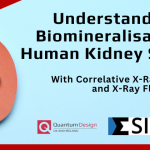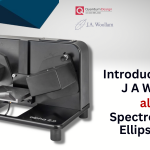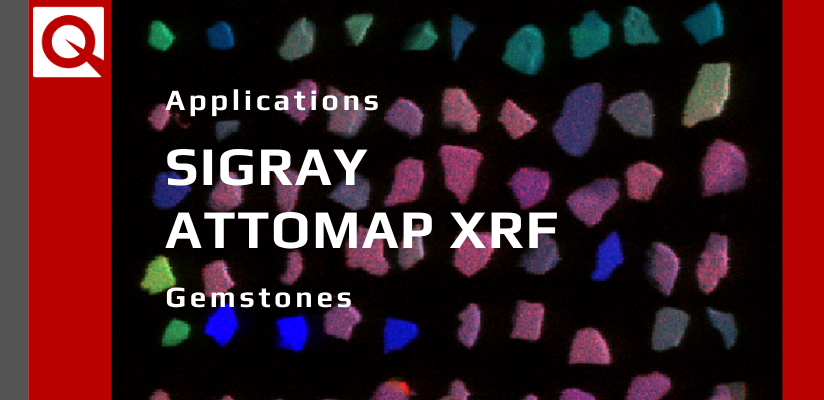

Overview of the Demo
Samples:
Probe Mount Disc#5
Set Up:
- Moly Target of Multi-target x-ray source with optics optimised for Molybdenum K-alpha edge(17.4KeV)
- Performed in air, non-vacuum system
- X-ray beam is 90 degree to the sample surface in flat geometry
Desired Outcomes:
Major element percentage & trace element detection
XRF Heatmap from Various Channels
20um step size/ 0.5 seconds dwell time
Tri-Colour Composite
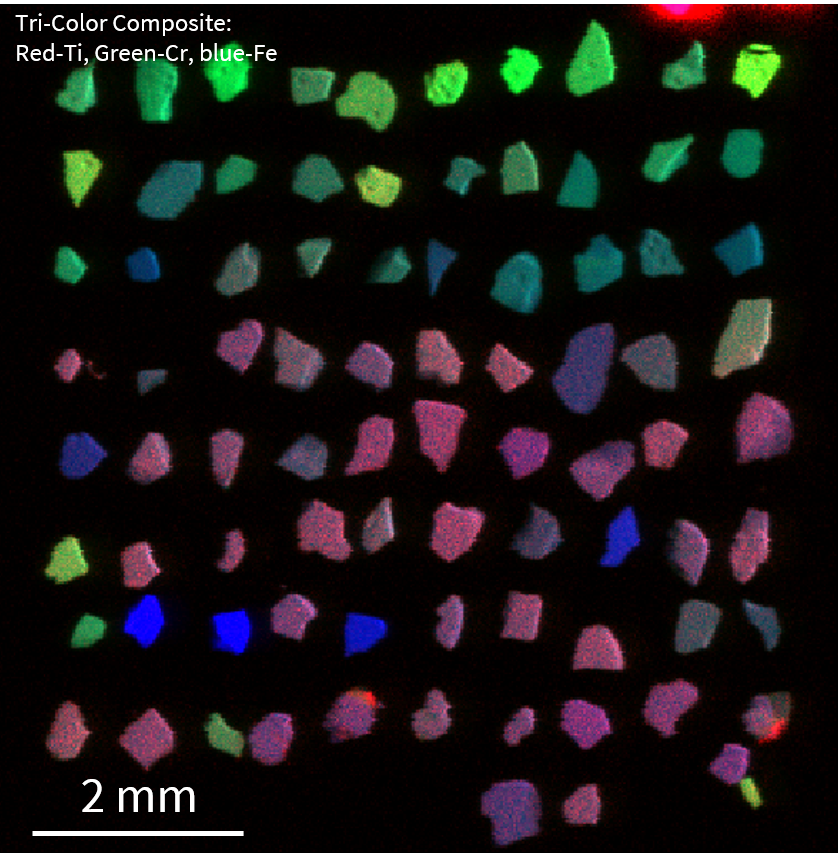

20um step size/ 0.5 seconds dwell time
Investigation of low Z elements to distinguish them as sapphires
Gradients of trace elements to understand viability of a location for diamonds
Each gemstone, taken from a different location, can indicate proximity to diamonds
Image Processing and Data Analysis
Auto-Segmentation
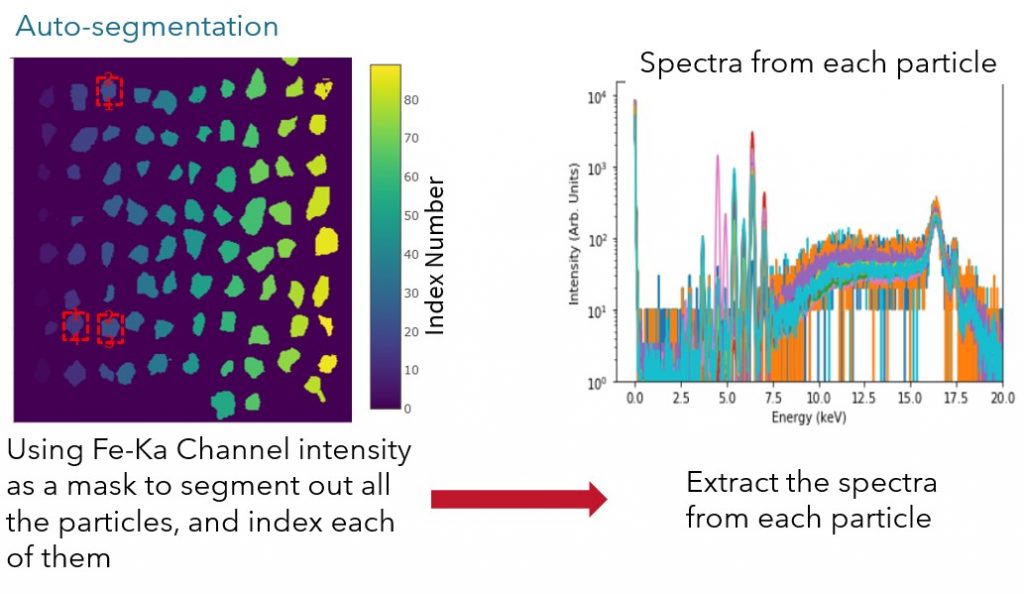

Integral spectra from particle#23 with BG subtraction and peak fitting (~190 sec statistic)
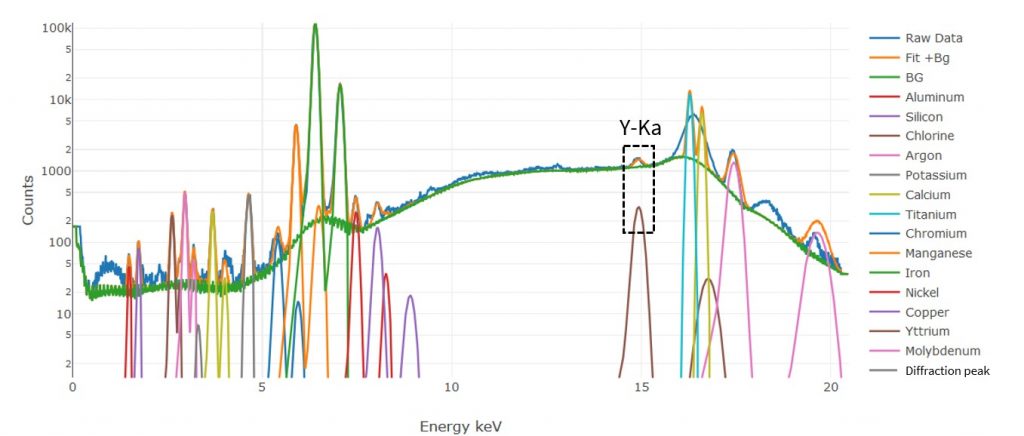

Sort through all particles to get Y-Ka counts distribution
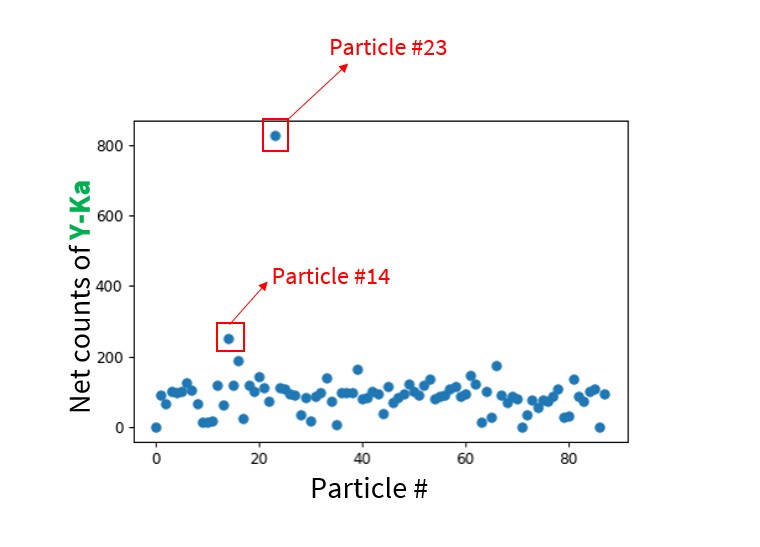

Spectra from 300-second point analysis on particle #23 ( with better statistics)
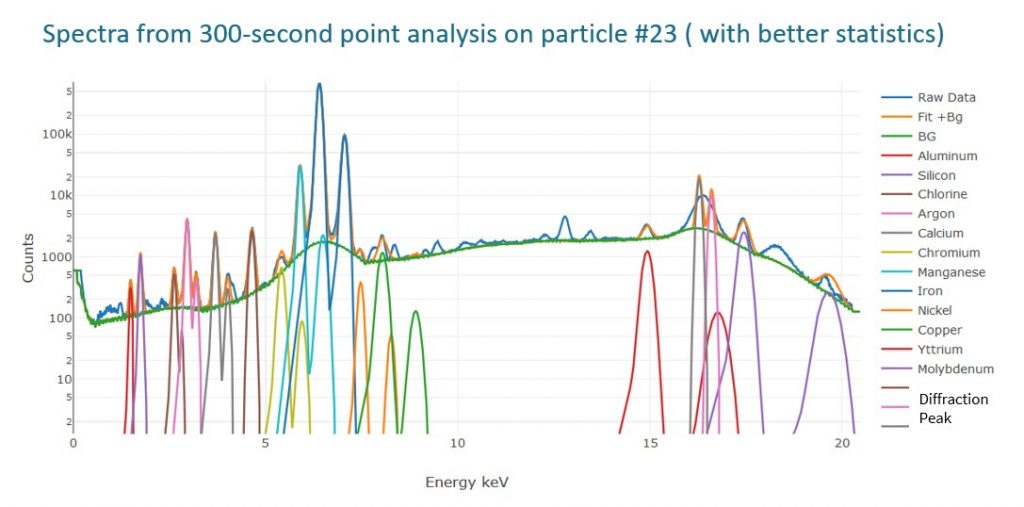

Net counts of each element after peak fitting and background subtraction from particle#23


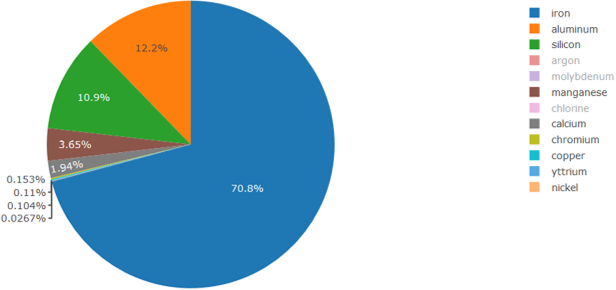

Spectra from 300-second point analysis on particle #14
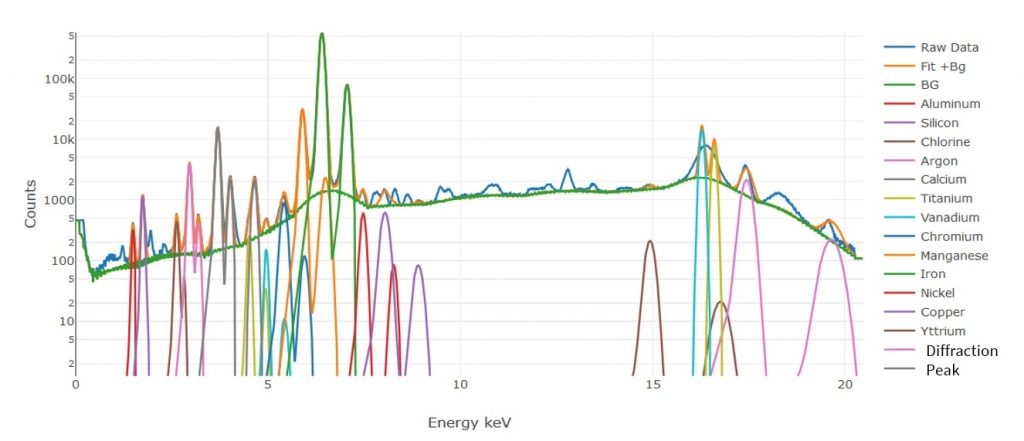

Net counts of each element after peak fitting and background subtraction from particle#14


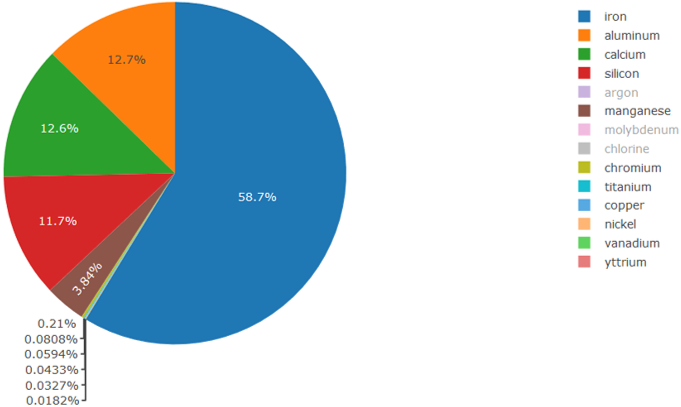

Spectra from 300-second point analysis on particle #21
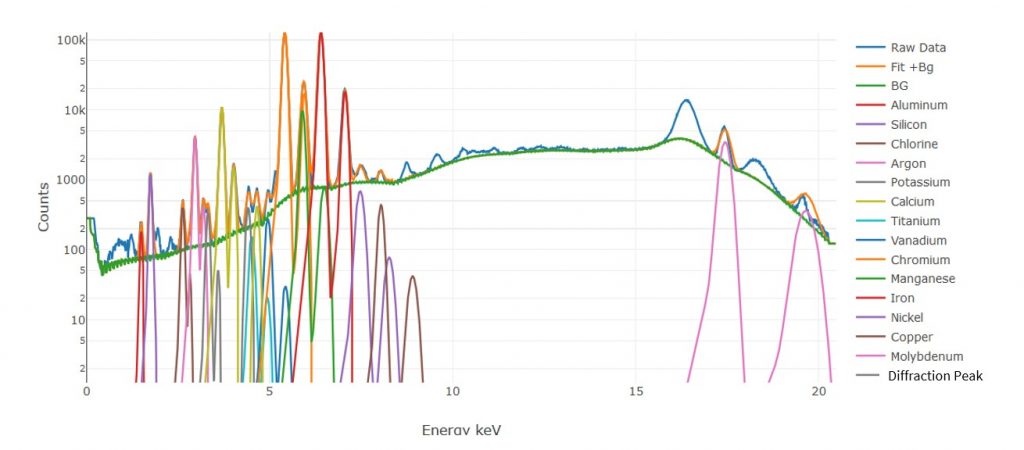

Net counts of each element after peak fitting and background subtraction from particle#21


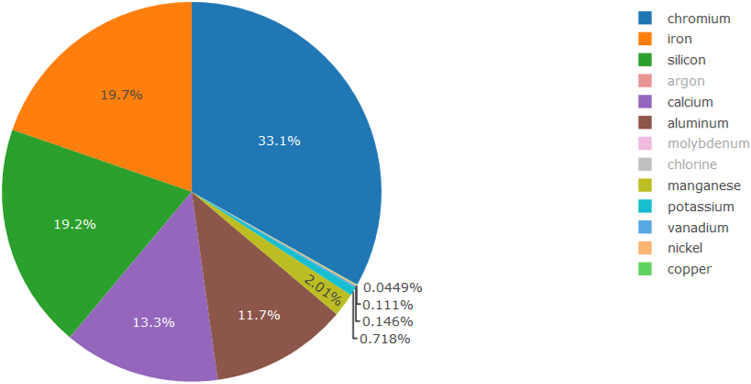

LLD Calculation on NIST Standard#610
300-second point analysis
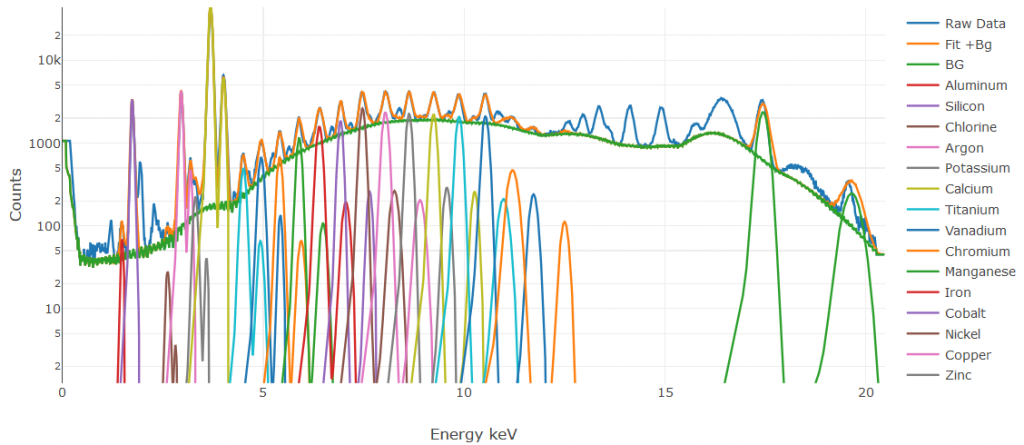

Relative Low Limit Detection(LLD) Normalized to 35% of Si in NIST#610 with 300 seconds data collection time
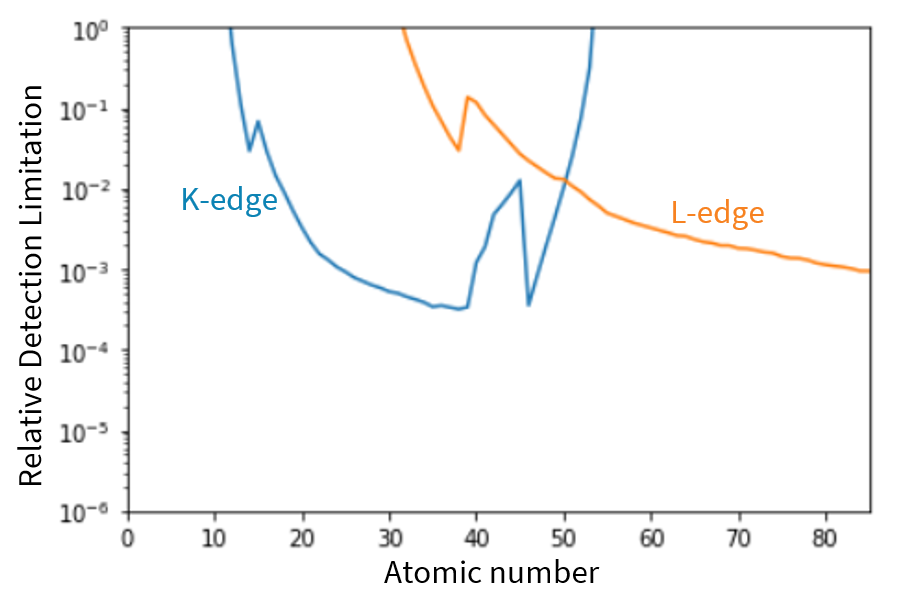

LLD Calculation on NIST Standard#613
300-second point analysis
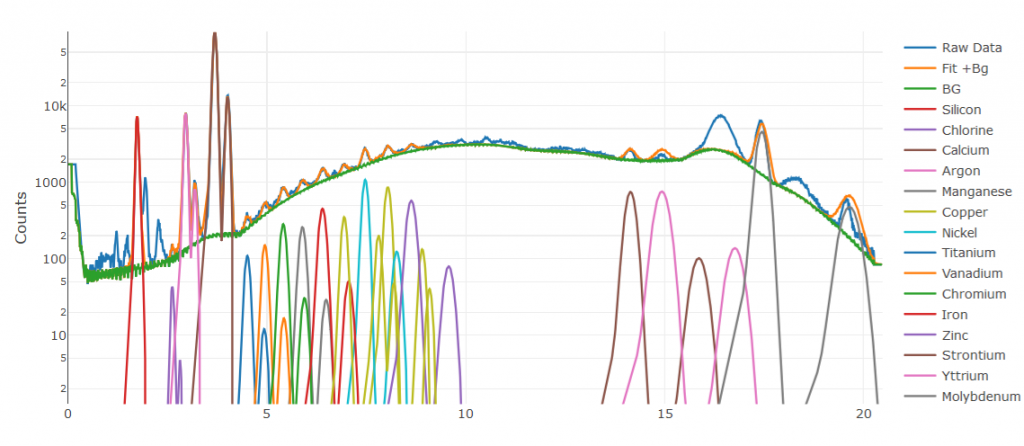

Relative Low Limit Detection(LLD) Normalised to 35% of Si in NIST#613 with 300 seconds data collection time
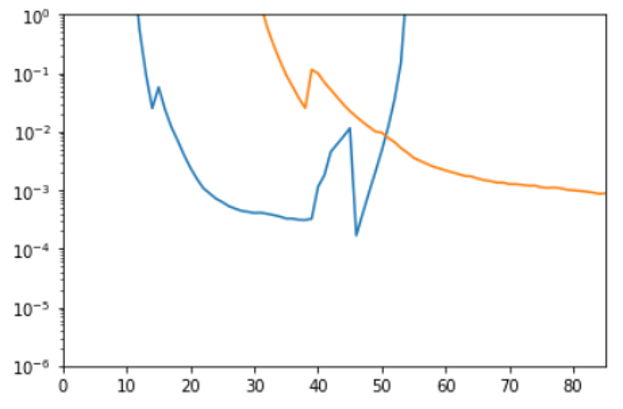

Conclusion
- We successfully mapped all the particles in Disc #5, and auto-segmented each particle
- Quantification can be done on each particle on major elements, which are shown in particle #23, particle #14 and particle #21
- Trace level Y is found in particle #23 and particle #14, but not particle #21
- Relative LLD is calculated with data from NIST Standard 610, plot is shown.







